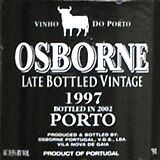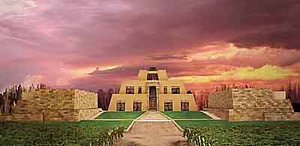|
Bordeaux primeurs
There's a lot of activity going on in Bordeaux today, and even a hint of nervousness in the air, my friends in the region say. The occasion? The primeurs ("Pree-mur") begin today. This two-week-long annual institution in Bordeaux is open only to invited wine-industry professionals and a handful of journalists. It doesn't get a lot of immediate publicity, but it may be one of the more important wine-related events that most wine consumers never see, because the primeurs set the scene for the annual sales of Bordeaux, one of the world's market-leading red-wine regions, and it's the first opportunity for wine buyers and a few wine writers to taste samples of last autumn's vintage. (Although visiting VIPs may have been offered random "barrel samples" during earlier visits, the varietal components - the Cabernet Sauvignon, Merlot and Cabernet Franc and other permitted grapes that make up red Bordeaux - were only blended into what will be their final form last month. This makes the Bordeaux primeurs unusual because of the importance of blending to the wines of the region, as compared with Burgundy, for example, where the wine is all Pinot Noir for the reds and all Chardonnay for the whites.) Starting today, and for the next two weeks, key representatives of major importers, distributors and wine merchants will make their way to Bordeaux for visits by appointment with virtually all of the major wineries, where they'll take notes and start thinking about what to buy, and how much they're willing to pay for it, when the producers announce their prices for the 2003s after the primeurs end. This is why the primeurs are so important to both the producer and the consumer: The opinions that wine professionals form during these two weeks will strongly influence the prices that each winery decides to set for its first "tranche" or price offering. Once the prices are set and the bids made, consumers - or at least those affluent and passionate enough about Bordeaux to want to play - will be able to purchase the wines as "futures," paying now for future delivery. The wine itself will remain in barrels for another year or so before being bottled and shipped to merchants around the world next year. Consumers will also soon begin seeing tasting notes and preliminary ratings on the 2003 Bordeaux from the big-name producers as visiting writers begin publishing their barrel-tasting reports. Take care, though, as youthful wines in barrel are hard to judge and likely to change significantly through natural evolution between now and their eventual appearance in stores. Barrel tastings offer only a shadowy forecast of the wine that is to be, and even the leading critics have often published barrel notes that required dramatic revision when the finished product arrived. Although "barrel tasting" may imply a trek through a dark cellar, drawing tastes of wines directly from the casks, the scene at the primeurs isn't quite so romantic. The events occur in well-lighted tasting rooms, where samples drawn earlier are presented in fresh bottles with hand-written labels stuck on to identify the specific wine and its vintage along with the "tirage," the date when the wine sample was taken from the barrel. Winery representatives, usually including top management and the chateau's "technical director" or chief wine maker, will be present and ready to answer questions, with translators available if necessary to ensure that information is available at least in French and English. Distributors from countries speaking other languages may bring along their own translator, so the scene may become a bit like a mini-United Nations. Tastings are brief - there's a lot of ground to be covered in a short time - typically requiring no more than 10 to 15 minutes for each visitor. But they are also very thorough. A visiting wine-buyer's day in Bordeaux may begin shortly after breakfast and continue until evening, with 25 wineries or more on each day's itinerary. At each stop, they will taste the "grand vin" or leading label of the chateau as well as secondary labels, and may also request samples of earlier vintages for side-by-side comparison. That's going to be doubly significant in Bordeaux this year because buyers, critics and consumers alike have been debating what the wines will be like after the hottest summer in more than half a century. The torrid summer of '03 yielded a relatively light harvest with smaller and more thick-skinned grapes than usual. The wines may be unusually concentrated, but will they be typical? It's a challenge to wine makers, and every producer hopes that the technical skills of their trained experts will take the fruit that nature provided, and present it at its best. The world of wine lovers will be watching with considerable interest. For a preview, I'm delighted to have the fine and historic Château Palmer join today's 30 Second Wine Advisor as a commercial sponsor. The brief introduction below includes a link to a detailed Vintage 2003 report by Chateau Palmer's Technical Director Philippe Delfaut.
TALK ABOUT WINE ONLINE If you prefer to comment privately, feel free to send me E-mail at wine@wineloverspage.com. I'll respond personally to the extent that time and volume permit. 
Chateau Palmer 2003 Vintage Report The 2003 vintage in Bordeaux was characterized by several very hot spells, reports Chateau Palmer's Technical Director Philippe Delfaut, in an exclusive report on the chateau's Website. He says this unusual weather accounted for a very low volume of small grapes with thick skins. Their perfect ripeness is reflected in high-class, well-balanced wines, which are sure to reveal the extraordinary character of this vintage in years to come.
To learn more about the remarkable vintage of 2003, "The year of the heat wave," we invite you to read M. Delfaut's Now, for today's tasting report, we move from Bordeaux to a very good value in a Late Bottled Vintage (LBV) Port, a style of Port that is held in barrels for years after the vintage, to make a wine that can be enjoyed in the short term without the lengthy cellaring require to mature true Vintage Port.  Osborne 1997 Late Bottled Vintage Porto ($16.99)
Osborne 1997 Late Bottled Vintage Porto ($16.99)
This LBV Port was bottled in 2002, five years after the vintage. Clear but very dark reddish-purple in color, it shows pleasantly complex aromas with plums and anise in the foreground, cherries and spice lurking behind them, with a sharp "vinous" edge that hints at its fortification with brandy. Full and round, sweet black-fruit flavors seem almost soft on the first taste, but "grippy" acidity and rather coarse tannins fill in structure as the wine crosses the palate. It ends as it began, with plums, anise and light spice in the finish. U. S. importer: W. J. Deutsch & Sons Ltd., Harrison, N.Y. (March 24, 2004) FOOD MATCH: I like sweet wines best as dessert rather than with dessert, but it's also fine with a chunk of blue cheese, from Roquefort to Stilton to California Point Reyes blue, and very dark, not-too-sweet chocolate desserts can also make a persuasive match with young Port. VALUE: Although LBV may lack the style and grace of true Vintage Port, particularly with maturity, this under-$20 price is a fraction the cost of the real thing, and a significantly better value than simple, non-vintage Ruby Ports that sell for only a few dollars less. WHEN TO DRINK: Unlike Vintage Port, LBV doesn't particularly gain from cellar time; but its fortified strength will certainly keep it for years if you don't wish to consume it soon.
FIND THIS WINE ONLINE: Look for vendors and prices for Osborne 1997 Port on Wine-Searcher.com:
Rancho San Diego Travel: Louise and Bernard Streiff's Andes Wines Tour is designed to provide you with both a complete cultural experience and an appreciation of South American wines. With expert wine writer and consultant Michael Schachner as host, this memorable tour will visit wineries in Argentina and Chile at the best time, the southern hemisphere's early summer. Wineries have been selected by Michael Schachner, who will add to your understanding and enjoyment of South American wines. Our small-group tour will be limited to 12 to 16 participants to ensure an intimate scale. The tour begins in Buenos Aires on Dec. 1, then flies to the beautiful Mendoza wine region for visits and tastings at Catena Zapata, La Rural, Terrazas de los Andes and Norton wineries, with evening dinners at Norton and the famous "1884" restaurant. Following a spectacular day of driving through the Andes Mountains, the group will arrive at Santiago de Chile on Sunday, Dec. 5. Chilean winery tastings will include Haras de Pirque, Concha y Toro, Viu Manent, MontGras, Casa Lapostolle, Santa Rita and Miguel Torres, with dinners at "Kilometre" in Santiago, one of the best restaurants in the city, and winery dinners at MontGras and Miguel Torres, concluding in Santiago for flights home on Dec. 11.
For the itinerary and more information about this unforgettable wine and cultural tour, see the Rancho San Diego Travel page on WineLoversPage.com, This week on WineLoversPage.com Here are links to some of our recently published articles that I think you'll enjoy:
• Guide to Italian Wines: The latest from Amarone
• Wine Lovers' Discussion Group: From "corkage" to "bloatage" 
California Wine Club Time is running out!
Your chance to save on some of California's most highly rated and hard-to-find wines ends in three days! All month we've been telling you about The California Wine Club's March Wine Sale and now you have just three days left to order! Visit
Place your wine sale order online at
TASTING NOTES! To view Robin Garr's tasting reports on six of the wines featured in California Wine Club's sale, see the March 15 Wine Advisor, Last Week's Wine Advisor Index The Wine Advisor's daily edition is usually distributed on Mondays, Wednesdays and Fridays (and, for those who subscribe, the FoodLetter on Thursdays). Here's the index to last week's columns:
• The many faces of Pinot Noir (March 26, 2004)
• More talk about "talkers" (March 24, 2004)
• Do shelf "talkers" talk to you? (March 22, 2004)
• Complete 30 Second Wine Advisor archive:
• Wine Advisor FoodLetter: Corned beef hash (March 25, 2004)
• Wine Advisor Foodletter archive:
SUBSCRIBE: Administrivia To subscribe or unsubscribe from The 30 Second Wine Advisor, change your E-mail address, or for any other administrative matters, please use the individualized hotlink found at the end of your E-mail edition. If this is not practical, contact me by E-mail at wine@wineloverspage.com, including the exact E-mail address that you used when you subscribed, so I can find your record. We do not use our E-mail list for any other purpose and will never give or sell your name or E-mail address to anyone. I welcome feedback, suggestions, and ideas for future columns. To contact me, please send E-mail to wine@wineloverspage.com All the wine-tasting reports posted here are consumer-oriented. In order to maintain objectivity and avoid conflicts of interest, I purchase all the wines I rate at my own expense in retail stores and accept no samples, gifts or other gratuities from the wine industry.
Monday, March 29, 2004 |





